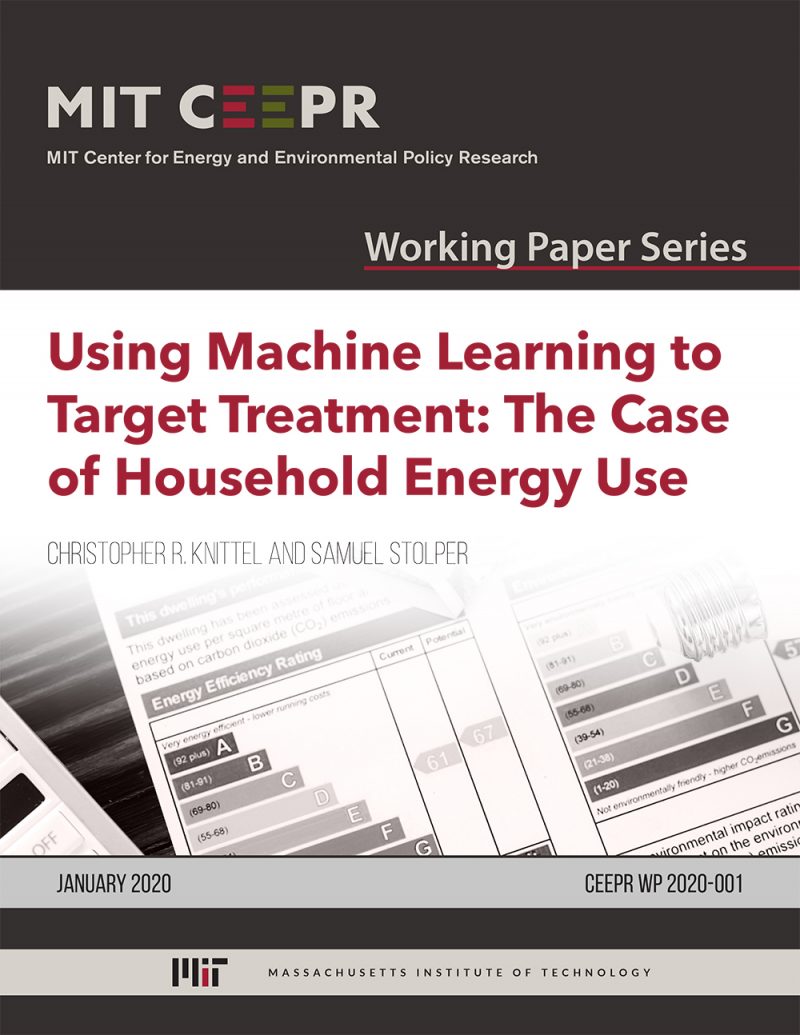Using Machine Learning to Target Treatment: The Case of Household Energy Use
Christopher R. Knittel and Samuel Stolper
January 2020
We use causal forests to evaluate the heterogeneous treatment effects (TEs) of repeated behavioral nudges towards household energy conservation. The average response is a monthly electricity reduction of 9 kilowatt-hours (kWh), but the full distribution of responses ranges from -30 to +10 kWh. Selective targeting of treatment using the forest raises social net benefits by 12-120 percent, depending on the year and welfare function. Pre-treatment consumption and home value are the strongest predictors of treatment effect. We find suggestive evidence of a “boomerang effect”: households with lower consumption than similar neighbors are the ones with positive TE estimates.
Keywords: machine learning, program evaluation, targeting, energy efficiency.
JEL Codes: C53; Q40; D90



